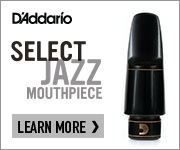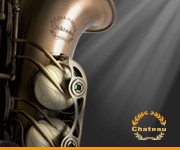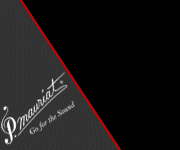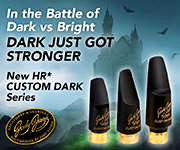Re: Hi Everyone
I will try answering your question, but be prepared for a lot of reading.
But first I have some questions that I need to have answered. You state that you are playing in classic big bands, and in general, I don't think of "bright" mouthpieces when I think of big bands. Do you mean bright (a lot of higher partial frequencies) or are you looking for a mouthpiece that will project better (better presence without overblowing)? Brightness and projection are very different things, so give this some consideration.
Mouthpieces that play bright generally have small chambers, and often, high baffles. Brightness is not a strong function of tip size. I have seen some argurements that state that for the same design, a larger tip plays darker, but that is minor compared to the chamber and baffle. So let's take tip size out of the brightness discussions. Brightness also doesn't care much about mouthpiece material. Some of Otto Link STM metal pieces play pretty dark. I have a mixture of HR and metal mouthpieces for my alto and tenor, and the metals I have are not my brightest pieces. The metal mouthpiece that do play bright generally have small chambers and substantial baffles, and the brightness is due to these features of geometry. Note that metal Berg Larsens come in 0,1,2 and 3 markings with 0 being brightest, and 3 darkest. The material is the same in these pieces, but the chamber sizes are what varies.
So you may not find the answer in how the mouthpieces are marked. This is why so many of us go on mouthpiece quests, because finding the right mouthpiece is difficult. The best way to find the right mouthpiece is to just play lots of mouthpieces and pay attention to the differences in sound. And make sure you are playing them in a relatively open room, and not in one of those small, hard closets that most music stores use for play testing. A small hard room will not give an accurate idea of sound quality.
I can recommend a few pieces for you to try, and these are all HR or resin mouthpieces that have some brightness, and also good projection (both features). Good candidates that come to mind in the under $200 category are: "Jody Jazz Jet", "Vandoren Jumbo Java" and the "GW slant style" mouthpieces that are made by mouthpiece maker Greg Wier, and are sold on Ebay all the time. For a little more, you might look for a "Mouthpiece Cafe House Blend" mouthpiece.
In my experience, there seems to be more variation in sound of metal mouthpieces, than in ones I mentioned above. If you are convinced you want metal, check out the metal Vandorens (their production consitency is very good). You can also check out Bergs and Dukoff's, but variation on these pieces can be tremendous, so be prepared to try many, many pieces before finding the right one. And if money is no object, try a Theo Wanne Durga (but not the Shiva, it would not go well with a big band).
Reply To Post
 Forgot Username? Forgot Password?
Forgot Username? Forgot Password?




